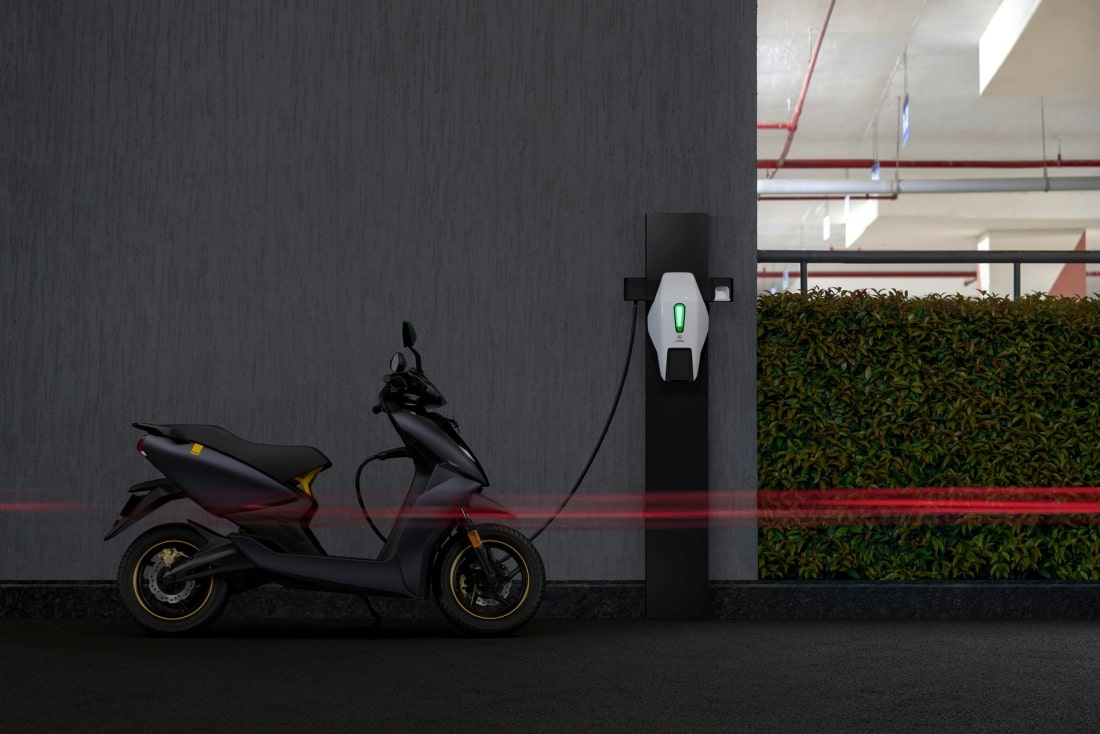
icct considers potential of charging methods and incentives to catalyse electric two-wheeler market
1009 days ago
4 minutes
Following on from an article about state government incentives in India are making many electric two-wheeler models near equivalent in price to gasoline models, a new piece by The International Council on Clean Transportation (icct) looks in detail at Total Cost of Ownership (TCO) and charging infrastructure incentives.
Two-wheelers are a mass market in India, and lower upfront costs also equate to lower monthly costs for those who borrow. But what about running costs? Fuel is the key factor, and with gasoline prices rising, and set to continue to do so, electric two-wheelers present a very appetising alternative.
The article takes a look at range, noting that many short-range electric two-wheeler models can achieve 75 km to 100 km of real world-range in city driving conditions, while mid-range models with real-world range closer to 150 km are in the pipeline. And with these figures and general usage patterns, charging could be well managed at home only. Home charging, however, relies very much on the user’s behaviour and can present a range of particular obstacles. For these reasons, public charging infrastructure is also important in the electric mobility big picture.
It is noted that there would be a greater reliance on public charging in the earlier years of adoption, while home facilities are installed and integrated into new developments. The author goes on to break down the TCO considerations when including the impact of public charging:
“From our earlier work, we know that electric models have a lower total cost of ownership (TCO) than gasoline models at current gasoline prices and with home charging. Since the cost of public charging can be high, sometimes twice as high as residential electricity tariffs, I build here on our cost parity model to examine what happens to TCO parity under different charging scenarios. I assumed the average residential electricity tariff to be INR 7/kWh and the average public charging tariff to be INR 14/kWh. Further, I looked at the impact on TCO parity at two baseline prices for gasoline—average prices in 2021 and in 2019—and included a 5% annual escalation in both electricity and gasoline costs.”
The charts below show the timescales at which a 150km real-world range electric motorbike may reach 10 year TCO cost parity with gasoline fueled motorbikes, first without, and then with incentives. The incentives calculation “includes the revised FAME-II upfront subsidy and the preferential Goods and Services Tax (GST) benefit for the electric model.”
The figures illustrate that cost parity could be achieved by 2022 solely via home charging, and by 2023 with entirely public charging and no incentives. The charts also adjust to consider gasoline prices as they were 2 years prior, and at that rate parity is reached in 2023 with 100% home charging, and 2025 with only public charging. It can be seen that a lower gasoline price and reliance on public charging together cause the greatest delay in reaching TCO parity.
By contrast, when the chart takes purchase incentives into account, parity is already be achieved even if relying solely on the more expensive public charging. On top of this, incentives can also counteract a gasoline cost reduction to 2019 prices. There author notes that, “the current upfront purchase incentives are playing an enabling role in alleviating any charging cost related anxiety that consumers might have. That’s especially useful in the early phases of the market when the infrastructure for home charging is less mature.”
The article goes on to elaborate on some of the challenges and barriers involved in home charging, such as socket requirements, and objections from neighbours or housing associations. It concludes that achieving TCO parity is key to the adoption of electric two-wheelers by the mass market, and that it is therefore the perfect time for governments to take action in incentivising their uptake.
Read the original in more detail here: https://theicct.org/charging-electric-2w-india-sept21?utm_source=ICCT+mailing+list&utm_campaign=d5a2a307e4-lately_from_feb2018_COPY_01&utm_medium=email&utm_term=0_ef73e76009-d5a2a307e4-510831568

LEVA EU
Campaign success
Lorem ipsum dolor sit amet, consectetur adipisicing elit, sed do eiusmod tempor incididunt ut labore et dolore magna aliqua.
Member profile
Lorem ipsum dolor sit amet, consectetur adipisicing elit, sed do eiusmod tempor incididunt ut labore et dolore magna aliqua.

